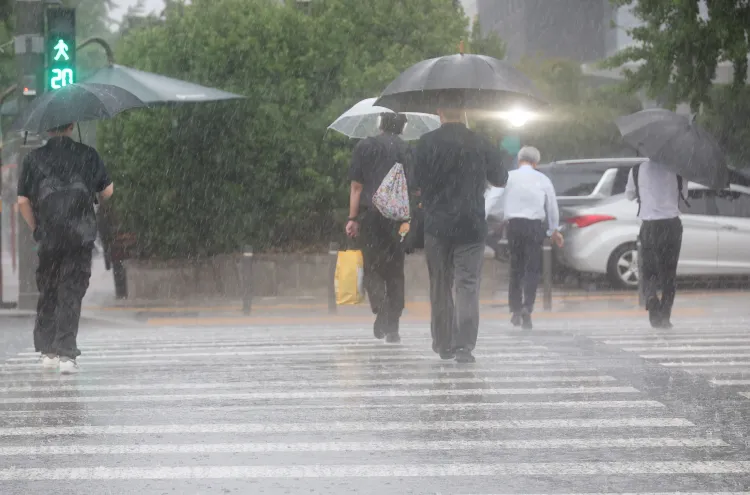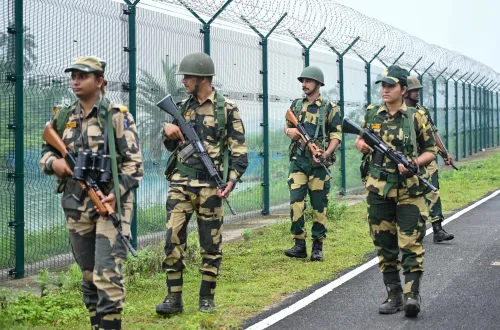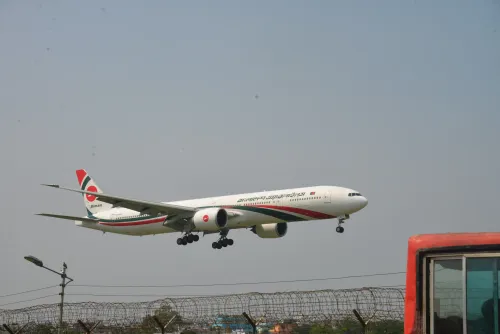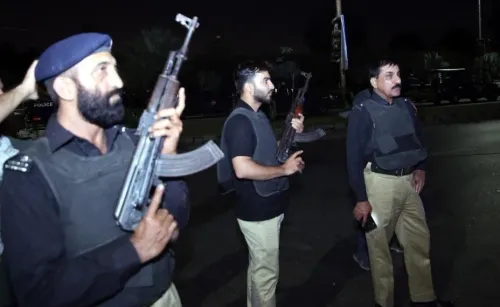What Caused Heavy Rain to Flood Parts of Seoul After Record Heat?

Synopsis
Key Takeaways
- Seoul experienced record-breaking temperatures followed by severe flooding.
- Significant disruptions occurred in public transportation.
- Emergency measures were implemented to protect residents.
- Other cities across South Korea also recorded high temperatures.
- The events highlight the challenges of climate change in urban areas.
Seoul, July 8 (NationPress) A sudden deluge resulted in flooded thoroughfares and disrupted public transportation in various areas of Seoul on Tuesday, just hours after the South Korean capital registered its hottest early July temperature in over a century.
Intense rainfall swept through southwestern Seoul, temporarily submerging roads surrounding an apartment complex in Gocheok-dong, as well as areas near Mokdong Bridge and Yanghwa Grand Bridge in the late afternoon, as reported by local fire authorities.
This flooding caused significant traffic delays during the evening rush hour.
Part of Seoul's subway line number 1 was temporarily halted due to the adverse weather, complicating commuters' journeys home, according to Yonhap news agency.
Officials in the Yeongdeungpo and Dongjak districts dispatched emergency text alerts to residents, advising them to steer clear of pathways near streams, valleys, and other flood-prone areas.
Earlier that day, temperatures in the capital soared to 37.7 degrees Celsius at approximately 3 p.m., the highest recorded for early July in 117 years, according to the weather agency.
This record was shattered after 86 years, as the previous high for the first ten days of July in Seoul was 36.8 degrees Celsius set on July 9, 1939.
This marks Seoul's warmest day for early July in 117 years since temperature records began in 1908. Additionally, several other cities across the nation set new high-temperature records for early July: Incheon (35.6 degrees Celsius), Wonju of Gangwon Province (35.4 degrees Celsius), Suwon of Gyeonggi Province (35.7 degrees Celsius), Cheongju of North Chungcheong Province (35.7 degrees Celsius), Daejeon (36.3 degrees Celsius), Gochang of North Jeolla Province (35.8 degrees Celsius), and Busan (34.5 degrees Celsius), the weather agency noted.
Temperatures in the border city of Paju and Gwangmyeong, located just south of Seoul, exceeded 40 degrees Celsius. This marks the first instance of temperatures surpassing 40 degrees Celsius in July, reported Yonhap news agency.
Seoul experienced its ninth consecutive tropical night between Monday and Tuesday.
According to the weather agency, the average temperature across the nation, excluding the southern Jeju Island, during the first seven days of July was 28.1 degrees Celsius, the highest recorded since tracking began in 1973.










